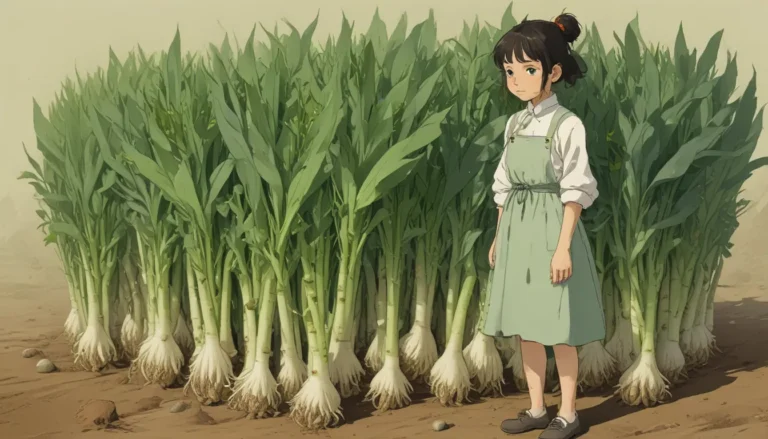A Comprehensive Guide to Planting and Growing Jerusalem Artichokes

Discover the Fascinating World of Helianthus Tuberosus
When it comes to planting and growing Jerusalem artichokes, also known as sunchokes, there are a few misconceptions that we need to address right away. Despite what the name might suggest, these vibrant and sunny plants are not actually from Jerusalem, nor are they related to artichokes!
On the bright side, Jerusalem artichokes are not just beautiful flowers; their roots, known as tubers, are also a delicious food crop. This combination of aesthetic beauty and culinary delight has made these plants a favorite among Native American peoples and Europeans for thousands of years, with a rich history that dates back to their introduction to the Western world.
Cultivation and History
Jerusalem artichokes, unlike their globe artichoke relatives, are native to North America and were originally cultivated by native tribes of the Central Plains for both food and medicine. French settlers later discovered these plants on the East Coast and brought them back to Europe, where they became a staple in French cuisine.
Over the years, various cultivars and varieties of Jerusalem artichokes have been developed, offering a range of flavors and colors to choose from. Whether you’re looking to add beauty to your garden or enhance your culinary creations, these plants have a lot to offer.
Propagation
One of the great things about growing Jerusalem artichokes is that you don’t need to start from seed. Simply obtain tubers in the spring from a local farming or gardening store and plant them directly in your garden.
When planting Jerusalem artichokes, remember to space them accordingly based on your desired yield. Whether you’re starting with a small patch or planning for a larger crop, these plants are relatively low-maintenance once established.
How to Grow
Getting Jerusalem artichokes started is a breeze, but it’s essential to maintain your patch to prevent them from spreading and taking over your garden. Staking, caging, or trellising your plants can help support their growth, especially as they reach their full height.
Ensure your plants receive adequate water during the early stages, but once established, they are relatively self-sustaining. Keep an eye on them for any signs of pests or diseases, and address them promptly to ensure a healthy harvest.
Growing Tips
- Stake, cage, or trellis your sunchokes to support their growth.
- Use the towering stature of these plants as living trellises for other vining plants.
- Remove flower heads during mid-summer to prevent top-heavy plants.
- Consider removing flowers before seeds form to prevent the plant from spreading.
Cultivars to Select
When choosing Jerusalem artichoke cultivars, consider your garden and culinary needs. Some popular varieties include:
- Stampede: Produces thick, round, cream-colored tubers with a nutty, sweet flavor.
- Red Fuseau: Long and thin reddish-purple tubers with a crunchy, sweet flavor.
- White Fuseau: Similar to the red variety but with thinner skin and superior flavor.
- Waldspinel: A long, red variety with an earthy, nutty flavor.
Managing Pests and Disease
Jerusalem artichokes are relatively resistant to pests and diseases, but keep an eye out for common issues like slugs, snails, sclerotinia stem rot, and aster yellows. Proper monitoring and early intervention can help protect your plants and ensure a bountiful harvest.
Harvesting
Harvesting Jerusalem artichokes is a rewarding experience, especially when you get to enjoy their delicious flavor in a variety of dishes. Wait until late fall or early winter to harvest your tubers, and be sure to store them properly for future use or propagation.
Recipes and Cooking Ideas
From salads to soups, Jerusalem artichokes can be incorporated into a wide range of dishes. Whether raw or cooked, these tubers offer a unique flavor profile that complements various ingredients and cooking methods.
Health and Healing
Jerusalem artichokes are not just delicious; they also offer significant nutritional benefits. Rich in vitamins, minerals, and dietary fiber, these tubers have drawn attention for their potential health effects, particularly in managing conditions like Type 2 diabetes and leaky gut syndrome.
Quick Reference Growing Guide
For a comprehensive overview of planting and growing Jerusalem artichokes, refer to our quick reference guide below:
Plant Type: Flower tuberous perennial
Flower/Foliage Color: Yellow/green, bronze
Native to: North America
Maintenance: Low
Hardiness (USDA Zone): 3-9
Tolerance: Some drought and cold weather
…
By following these guidelines, you can cultivate Jerusalem artichokes successfully in your garden, enjoy their culinary versatility, and explore their potential health benefits. Whether you’re a seasoned gardener or a novice enthusiast, these plants offer a unique gardening and culinary experience that is sure to delight your senses. Happy planting!





